The National Sun Yat-sen University Signs a Memorandum of Understanding with the Marine National Park Headquarters, Enriching World-Class Research on the Dongsha Islands
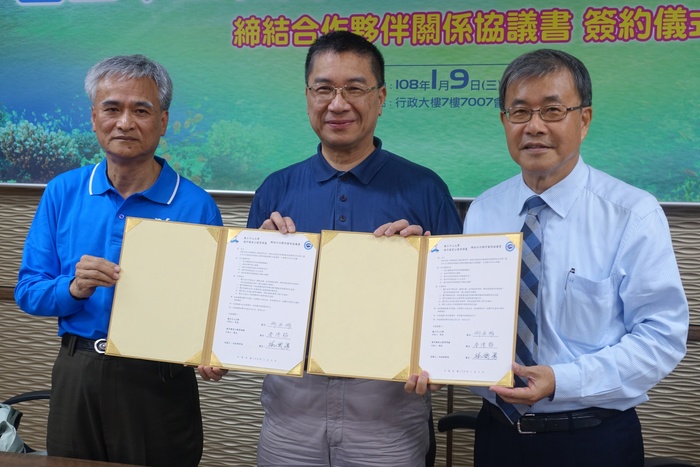
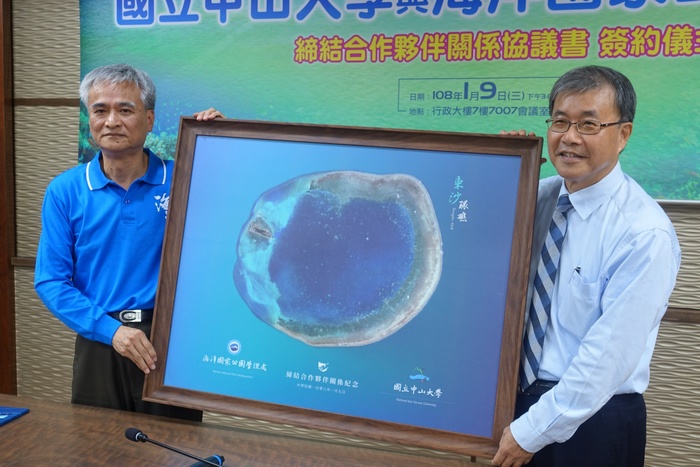
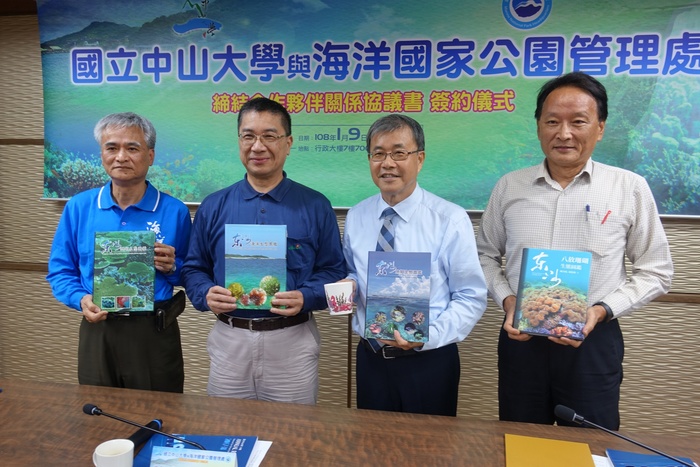
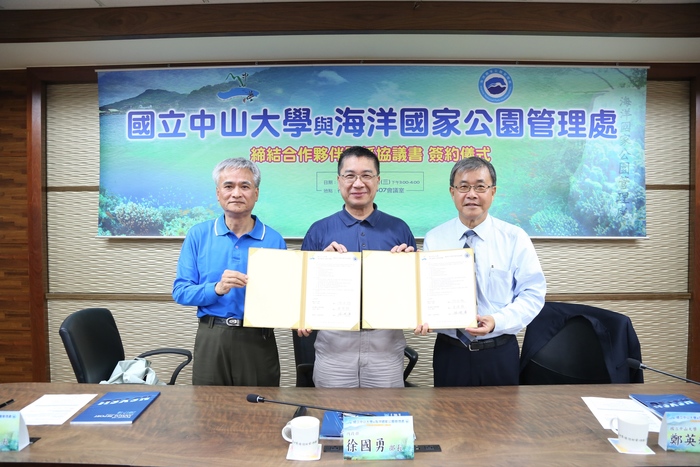
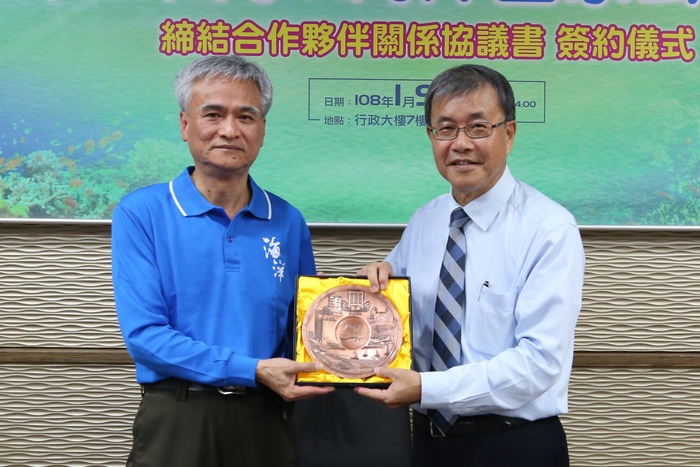
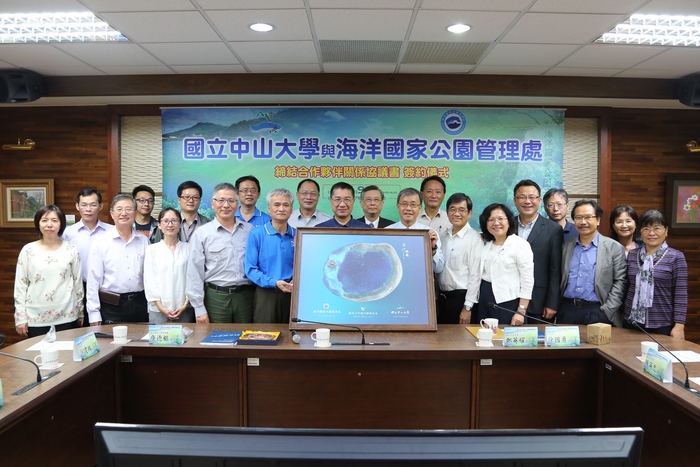
The National Sun Yat-sen University (NSYSU) signed a Memorandum of Understanding (MOU) with the Marine National Park Headquarters under the supervision of Minister of the Interior Hsu Kuo-yung. Accordingly, the two parties will work at the Dongsha Atoll Research Station to promote international scientific research cooperation between the countries in the South China Sea region, fulfilling Taiwan’s New Southbound Policy. Ying-yao Cheng, president of the NSYSU, stated that the scope of cooperation between the two institutions has expanded to include the Taiping Island, oceans, the atmosphere, Earth Sciences, humanities, and archeology. In addition, the two institutions will collaborate with scientists from countries indicated in the New Southbound Policies to complement one another.
Minister Hsu remarked that as the competent authority, he was pleased to witness the partnership between the NSYSU and Marine National Park Headquarters. He emphasized that for countries to prosper, they must have seas. As an island, Taiwan is endowed with remarkable natural resources. He hopes that by working with NSYSU, the Marine National Park can popularize Taiwan’s marine capacity and manage marine affairs using academics-oriented measures to develop Taiwan’s marine culture. He explained that the Dongsha Islands are yet to be opened to the general public and will promote ecotourism in the future. The goal is to combine industries and environmental protection and build the Dongsha Islands into an ecological island with green energy technology.
Keryea Soong, host of the Dongsha Atoll Research Station Construction Project and professor of the Department of Oceanography, NSYSU, expounded that with the support from the Ministry of Science and Technology, approximately 50 scientific studies had been conducted at the Dongsha Islands over the past five years; said studies were later published in international journals. In addition, several major discoveries were made, including the Dongsha Islands being the only sea area in Taiwan to see stingrays and sharks in large numbers; the Dongsha Islands being the home to Coenobita rugosus, the largest hermit crab (approximately 1.7 cm long) in southern Taiwan’s ecological islands; the Dongsha Islands possessing a seagrass bed measuring 80 km2 wide, which is 300 times the size of the Daan Forest Park. A large percentage (30%) of said seabed died in 2014 and has not yet recovered; large white atoll spots being observable from international civil aircraft; world-class, 200 to 4,000 year-old coral reefs being found 50 meters under water; and Dongsha Islands atolls having a “divable” sea area (i.e., less than 20 meter deep) of 500 km2, which is larger than the total coral reef area in Taiwan.
“Dongsha Islands boast the largest variety of marine animals in the world, and is the hot spot of marine animal research,” said Soong. Except for China, countries around the South China Sea have limited capacity and resources to invest in marine research, making it a perfect opportunity for Taiwan to give back to the international community. For example, the South China Sea is the “outpost” of global ocean acidification; here, people can foresee the future trend of global ocean acidification. By signing the MOU, the scope of cooperation between the NSYSU and Marine National Park has expanded to include the Taiping Island. Although the Taiping Island is small in size, it is only 10° (in latitude) away from the Dongsha Islands and located at the Tizard Bank. Thus, it features a coral island and tropical ocean environment that demands in-depth studies. In addition, the Dongsha Islands sea area is the location where the world’s largest internal waves occur, and the Taiping Island possesses independent internal wave mechanisms, both of which are the perfect environments and offer the perfect opportunities for related research.
NSYSU stationed itself in the Dongsha Islands since 2012. Under the guidance of the Marine National Park, it has built the Dongsha Atoll Research Station and constructed several exclusive research ships for scientists. The scientists are protected by the Coast Guard Administration, allowing them to perform field work with a peace of mind. Professor Soong invited international researchers who wish to study the atoll-filled Dongsha Islands to come to Taiwan, promising them that Taiwan would help them look after all other relevant matters. Over the past five years, scientists and institutions from over 20 countries including world-renowned marine and atmospheric research units have visited the Dongsha Islands to participate in joint research and host scientific conferences on the subject of the Dongsha Islands and the South China Sea in Taipei and Kaohsiung.
Minister Hsu remarked that as the competent authority, he was pleased to witness the partnership between the NSYSU and Marine National Park Headquarters. He emphasized that for countries to prosper, they must have seas. As an island, Taiwan is endowed with remarkable natural resources. He hopes that by working with NSYSU, the Marine National Park can popularize Taiwan’s marine capacity and manage marine affairs using academics-oriented measures to develop Taiwan’s marine culture. He explained that the Dongsha Islands are yet to be opened to the general public and will promote ecotourism in the future. The goal is to combine industries and environmental protection and build the Dongsha Islands into an ecological island with green energy technology.
Keryea Soong, host of the Dongsha Atoll Research Station Construction Project and professor of the Department of Oceanography, NSYSU, expounded that with the support from the Ministry of Science and Technology, approximately 50 scientific studies had been conducted at the Dongsha Islands over the past five years; said studies were later published in international journals. In addition, several major discoveries were made, including the Dongsha Islands being the only sea area in Taiwan to see stingrays and sharks in large numbers; the Dongsha Islands being the home to Coenobita rugosus, the largest hermit crab (approximately 1.7 cm long) in southern Taiwan’s ecological islands; the Dongsha Islands possessing a seagrass bed measuring 80 km2 wide, which is 300 times the size of the Daan Forest Park. A large percentage (30%) of said seabed died in 2014 and has not yet recovered; large white atoll spots being observable from international civil aircraft; world-class, 200 to 4,000 year-old coral reefs being found 50 meters under water; and Dongsha Islands atolls having a “divable” sea area (i.e., less than 20 meter deep) of 500 km2, which is larger than the total coral reef area in Taiwan.
“Dongsha Islands boast the largest variety of marine animals in the world, and is the hot spot of marine animal research,” said Soong. Except for China, countries around the South China Sea have limited capacity and resources to invest in marine research, making it a perfect opportunity for Taiwan to give back to the international community. For example, the South China Sea is the “outpost” of global ocean acidification; here, people can foresee the future trend of global ocean acidification. By signing the MOU, the scope of cooperation between the NSYSU and Marine National Park has expanded to include the Taiping Island. Although the Taiping Island is small in size, it is only 10° (in latitude) away from the Dongsha Islands and located at the Tizard Bank. Thus, it features a coral island and tropical ocean environment that demands in-depth studies. In addition, the Dongsha Islands sea area is the location where the world’s largest internal waves occur, and the Taiping Island possesses independent internal wave mechanisms, both of which are the perfect environments and offer the perfect opportunities for related research.
NSYSU stationed itself in the Dongsha Islands since 2012. Under the guidance of the Marine National Park, it has built the Dongsha Atoll Research Station and constructed several exclusive research ships for scientists. The scientists are protected by the Coast Guard Administration, allowing them to perform field work with a peace of mind. Professor Soong invited international researchers who wish to study the atoll-filled Dongsha Islands to come to Taiwan, promising them that Taiwan would help them look after all other relevant matters. Over the past five years, scientists and institutions from over 20 countries including world-renowned marine and atmospheric research units have visited the Dongsha Islands to participate in joint research and host scientific conferences on the subject of the Dongsha Islands and the South China Sea in Taipei and Kaohsiung.
Click Num:
Share
